In my last piece, Airfields of the Empire, I traced how the Royal Air Force laid the groundwork for aviation across the Middle East. What began as a strategic network of airstrips and refuelling posts soon evolved into a delicate latticework of imperial logistics. RAF stations dotted the coastline, Aden, Salalah, Masirah, Sharjah, Bahrain, Doha, Kuwait, Basrah, each a stitch in the imperial tapestry connecting distant colonies and dependencies to the British Crown. Seaplanes skimmed the shallows like dhows of steel, bearing post and prestige, while land planes helped secure the skies and sand dunes from raiders and rebels.
Aviation was a tool of projection, which collapsed distances, conquered deserts, and brought security and stabilty to the dominions. The aircraft was not just a vehicle but was a symbol of imperial reach, floating above tribal loyalties and national aspirations. But then came WWII and with it a sudden surge in urgency as dozens of emergency landing grounds and airstrips sprung up across Arabia, carved into the sand with little more than ambition and crushed coral. These wartime installations, built in haste but not without vision, would become the skeleton of the Gulf’s future civil aviation network.
When peace returned and the Union Jack began its slow retreat eastward, something curious happened: the runways remained. The Gulf, newly flush with oil wealth and political agency, looked at those old RAF strips and saw opportunity, where these outposts become the cradles of national carriers. What had once been launchpads for imperial patrols would soon become gateways to the world, only this time, flown under Arab colours.
The Birth of Civil Aviation in the Gulf
Historically, the Arabian Gulf has acted as a gateway between the East and the West, providing a natural transit destination for early trade routes. In the late 1920s, Imperial Airways had operated several proving flights through the Gulf, with the first flight to Bahrain occurring in August 1927, when a local pearl merchant chartered an aircraft from Baghdad, stopping overnight at Basra. Regular air services across the Gulf commenced in the early 1930s when Bahrain served by two terminals, a land-based civilian terminal at RAF Muharraq, becoming the region’s first commercial airport in 1932, and a marine terminal hosting flying boats which opened in 1937.
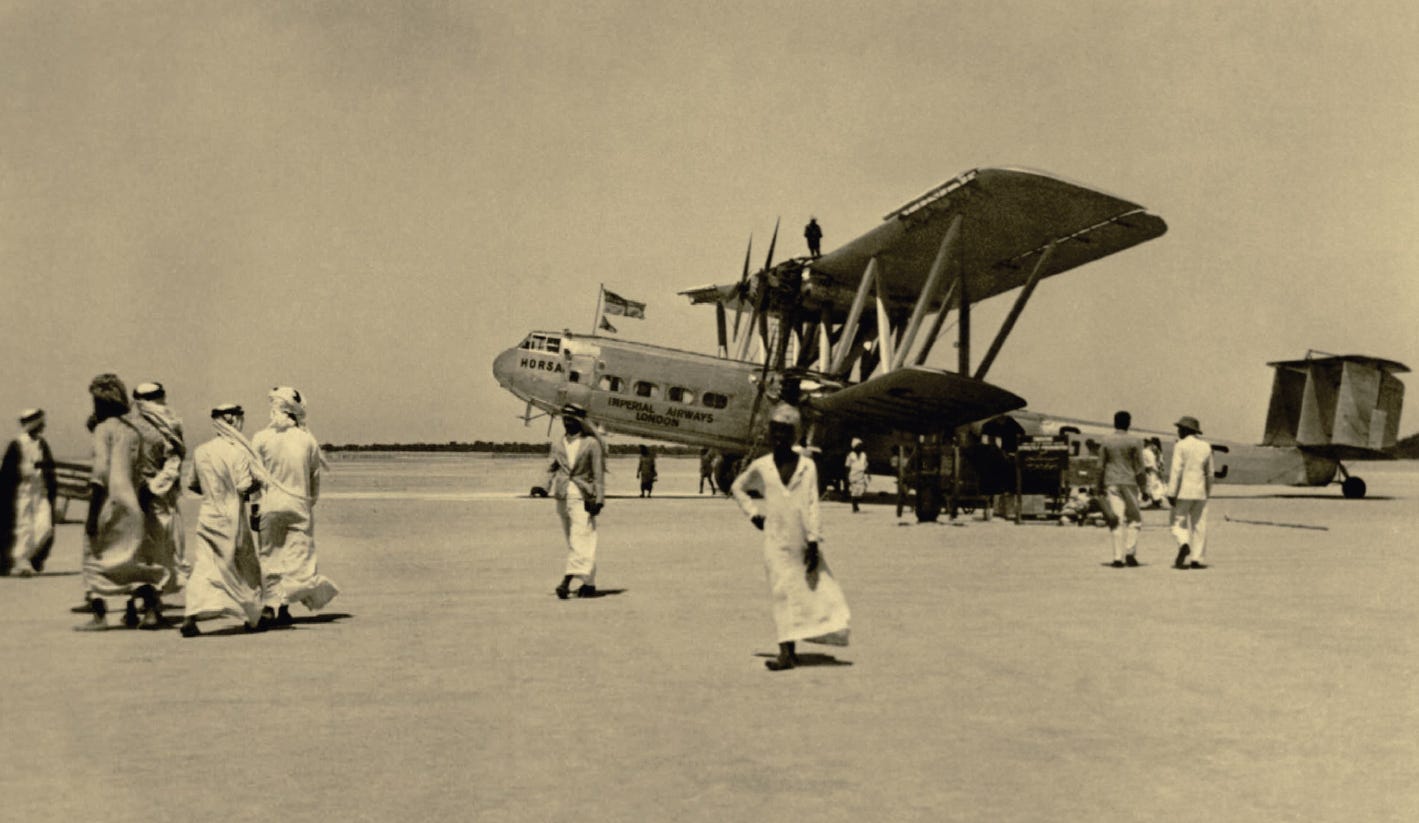
As the British Empire receded from the Gulf in the wake of the Suez Crisis, it left behind airstrips, hangars, and a people who had watched the sky fill with possibility. The timing was uncanny as oil revenues began to surge just as the Union Jack was being lowered, and Gulf monarchies moved swiftly to assert control not only over their territories but also their airspace and reimagine the aircraft as a symbol of national pride. The first to take to the skies under Arab stewardship was Gulf Aviation, whose birth is a fascinating story which I would love to discuss in a future piece, involving pilots from the RAF and the financial backing of leading Bahraini businessmen, supported by the Bahraini government. Nestled at the crossroads of trade and politics, Bahrain became the beating heart of Gulf connectivity. In 1973, the governments of Bahrain, Qatar, Oman, and Abu Dhabi acquired each a 25% share in the company and Gulf Air, its rebranded heir, was born as the flag carrier of all four, connecting the region to the rest of the world.
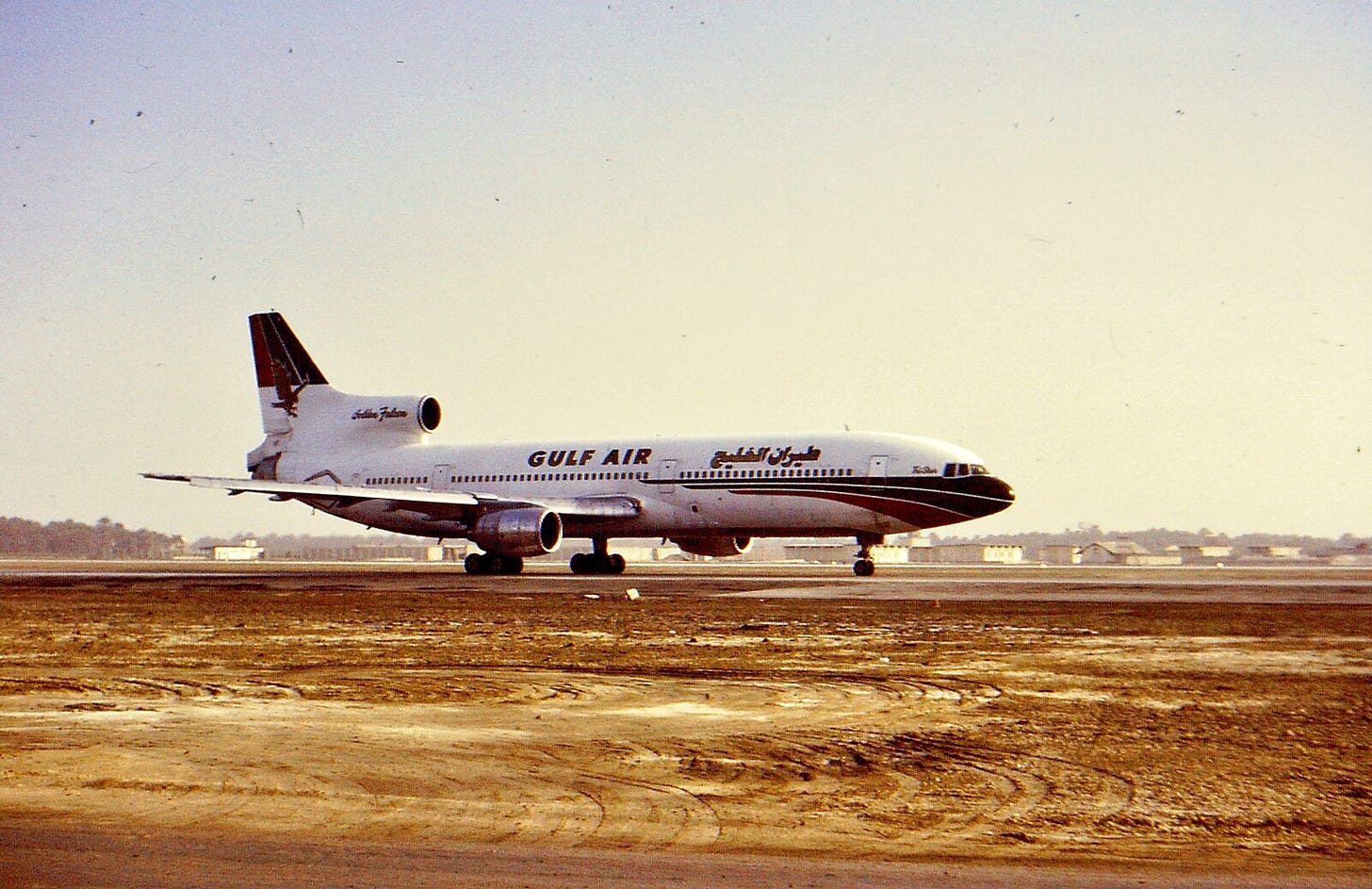
Meanwhile over on the Red Sea coast, Saudia was quietly building a different kind of aviation legacy. Founded in 1945 with a single DC-3 gifted by President Roosevelt to King Abdulaziz al Saud, the airline initially served pilgrims and dignitaries, tethered to the rhythms of the Hajj, which started seeing pilgrims flying into Jeddah since 1938. In an age when nearly 75% of pilgrims arrived by sea, the potential of air transport to bring in pilgrims to the holy city of Mecca was realised in 1952 when the Kingdom cut the hefty tax on pilgrimage, opening the skies to thousands who had long yearned to make the once in a lifetime pilgrimage. This led to an unprecedented number of people booking flights, putting immense pressure on existing carriers. In Beirut, as people were left stranded, the Lebanese Government asked for Western assistance, and the USAF, fresh off the Berlin Airlift, stepped in. 13 C-54 Skymasters from American bases in Libya and West Germany brought 3,783 pilgrims from Beirut to Jeddah in 75 trips over six days in what was called Operation Hajji Baba, an event the world media refered to as America’s Magic Carpet.

The flood of international pilgrims in the 50s and 60s even reshaped Saudi currency policy, leading to the introduction of paper notes which up until 1953 had been using silver coins that replaced Ottoman currency in the 1910s. To accomodate the increasing number of visitors, the Saudis instituted Hajj Receipts when converting foreign currency, notes which became widespread and transitioned into the Saudi Riyals used today. By the 1970s and 80s Saudia began leveraging its global network of pilgrims and had grown into a formidable regional carrier, helping stitch together the vast Saudi interior while projecting soft power abroad.
Breakaway Airlines: Tailfins and Rival Thrones
Both Gulf Air and Saudia were more than airlines, they were statecraft in motion that ferried technocrats, facilitated business, and opened up desert capitals to the world. By the 1980s however, the model of shared stewardship that had sustained Gulf Air began to fray. Each partner state wanted more connectivity and control, and more of their flag flying on international tailfins. The age of regional cooperation gave way to an era of competitive ambition. The first to strike was Dubai, with its visionary ruler, a world-class airport, and a pinch of stubborn independence, it launched Emirates in 1985. Relying heavily on its allies like PIA, which provided its first two aircraft alongside technical and administrative assistance, and the Al Maktoum Family that ruled Dubai who gifted two Boeing 727s from the Royal Air Wing, Emirates was built not as a flag carrier, but as a global brand: long-haul, luxury, and relentlessly international. Emirates didn’t just serve Dubai, it made Dubai a hub that mattered. Today, the airline is one of the largest operators of the A380, and is perhaps the only airline to make the beleaguered giant profitable, as it works perfectly well with their hub and spoke model of operations.
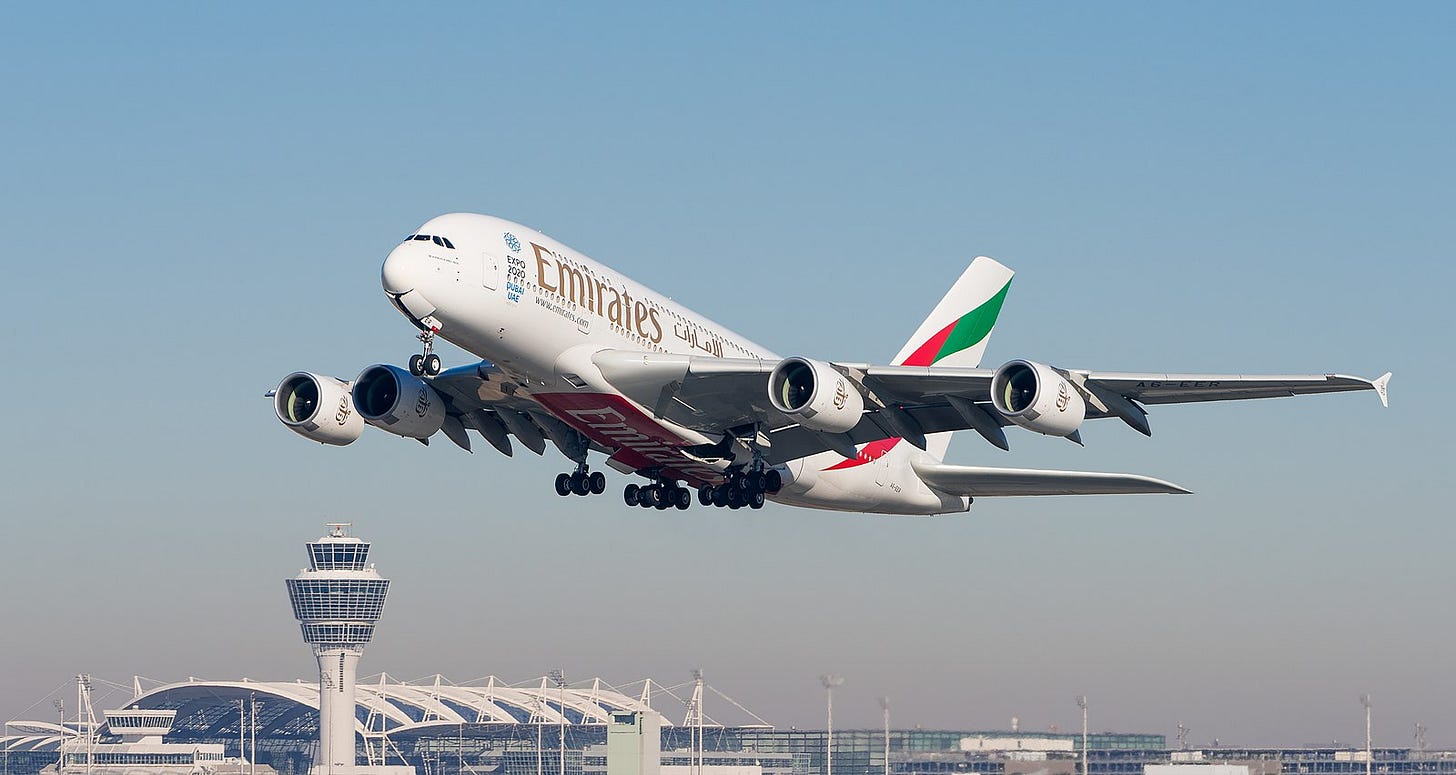
Then came Qatar Airways in 1994 when operations began as a small regional carrier before becoming one of the fastest growing airlines possibly in the history of aviation. Where Emirates went big, Qatar went boutique, backed by the immense wealth and diplomatic heft of the Qatari state, it positioned itself as a five-star alternative, a seamless bridge between East and West, and a projection of Qatari soft power in every major capital. Since then the airline has built a global network, and has become the only Khaleeji airline to have become a member of any of the big three global airline alliances by joining OneWorld in 2013. Just last week the airline showed its growing ambition by announcing the largest aircraft order in its history of 160 widebodies from Boeing, with an option for 50 more.
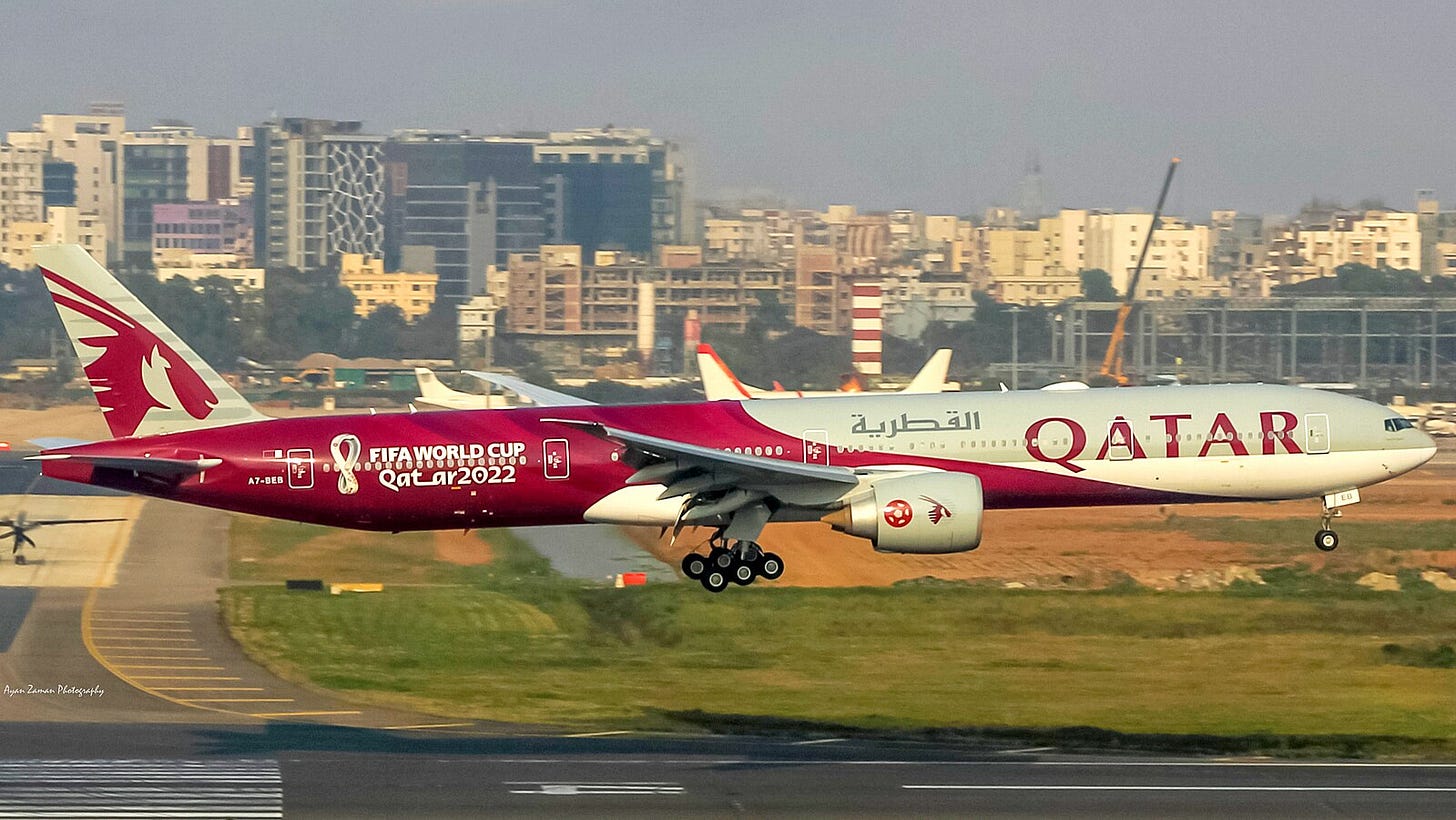
Etihad, born in 2003 from Abu Dhabi’s ambition, is the last of the big three Gulf challengers. Breaking away from Gulf Air, the airline combined state capital with a lavish aesthetic, casting itself as the connoisseur’s choice. The airline aimed to chase global scale by establishing its own alliance, consisting of members in whom Etihad held minority investments through equity stakes, however these half-dozen failing airlines (Alitalia, Air Berlin, Jet Airways, etc) proved that the airline had flown too close to the sun. While Emirates soared and Qatar Airways refined, Etihad’s wings were scorched by overreach. Despite these challenges, as well as the losses caused by the COVID-19 pandemic, Etihad soon returned to profitability in 2022, riding on the unexpected demand in post pandemic travel, even going far as redeploying its A380s which had been retired after merely seven years of service. The airline now plans to double its fleet size by 2030, by introducing A350s in early 2025 and a combination of 28 787s and 777Xs by 2028.
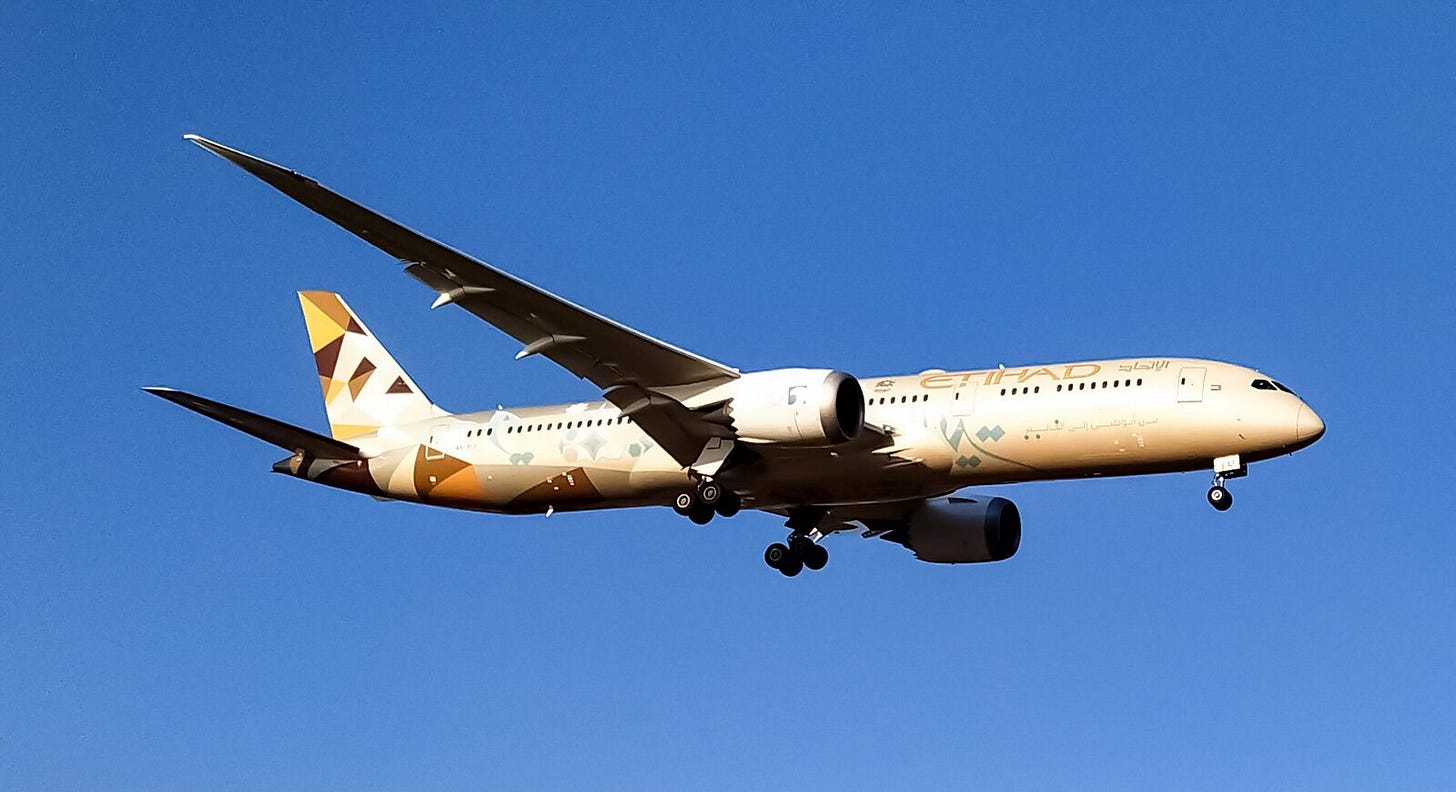
Finally, there was Oman Air which emerged quietly, stately, and tragically late to the game. Founded in 1993 as a government backed airline operating concurrently with Gulf Air, before withdrawing entirely in 2007 to focus on becoming the national carrier for the Sultanate, it left Bahrain in sole ownership of Gulf Air. Despite a proud heritage and a stunning geography, it never managed to scale like its neighbours. In many ways, it is the Gulf’s great aviation “what if”, proof that ambition alone does not make an airline empire. Since then both Oman Air and Gulf Air have struggled to stay aloft, grappling with losses, grounded fleets, and periodic layoffs, propped up by constant state support. Each of these carriers were born from the same Gulf soil but took radically different flight paths.

Low-Cost Revolution: Democratising Arab Skies
While legacy carriers were busy projecting national prestige, a quiet insurgency was brewing at 30,000ft. The region’s economic growth had created a middle class with migrant labourers, students and budget-conscious families who all needed affordable ways to travel. Enter the low-cost carriers, where airlines stripped away the frills that made flying accessible. The Emirate of Sharjah may not have the swagger of its neighbour Dubai, but in 2003 it made history by founding Air Arabia, the Gulf’s largest and first successful LCC. Its model was simple: no booze, no lounges, no nonsense but rock-solid reliability, lean operations, and unmatched affordability. It quickly grew into a regional powerhouse, connecting second tier cities like Sana’a, Salalah, Alexandria that were underserved by legacy carriers, proving that low-cost flying had a home in the Middle East.

Not long after in 2007 FlyDubai arrived, backed by the government of Dubai, with ambitions as tall as the Burj Khalifa, carved out a clever niche for itself by serving short-haul destinations that Emirates wouldn’t touch, but with a service culture that still reflected Dubai’s polish. Today FlyDubai isn’t just a feeder airline, it’s a force in its own right, offering everything from budget tickets to business class flatbeds on regional routes. Similarly FlyNas, born in Saudi Arabia, followed a similar playbook: efficient fleets, high-frequency routes serving pilgrimge routes as well as the growing Red Sea tourism, and domestic saturation. It's part of a broader Saudi Vision 2030, an effort to liberalise and diversify its economy, because tourism goals can’t run on prayers alone. Other carriers like Kuwait’s Jazeera Airways have managed to stay afloat by finding the sweet spot between flexibility and focus.

However, not every LCC soared. Bahrain Air found itself promising too much too fast, and buckled under regulatory and financial pressure, delivering empty gates and unpaid staff to ultimately fold in 2013. Wataniya Airways from Kuwait flew briefly, experimenting initially with an all business-class service, before trying its hand at the low cost market, before turbulence (and a failure to scale) forced it to shutter. These cases remind us that low-cost isn’t always low-risk. The LCC boom didn’t just add competition, it reshaped expectations. It brought the romance of flight back to the masses, and, in doing so, redefined that the skies belonged to everyone.
Turbulence and Transition
The Gulf's aviation ascent has been a spectacle of glittering terminals and globe-spanning ambitions but no ascent is without chop. As the skies grew crowded, and crises loomed from pandemics to politics, the region’s carriers faced a reckoning. Growth wasn’t enough and they had to evolve, or risk being grounded by their own weight. Once the beating heart of the Gulf, Gulf Air was Emirates before Emirates, but its unique status as a consortium of multiple states, Bahrain, Abu Dhabi, Qatar, and Oman proved unsustainable. One by one, partner states pulled out to launch their own national carriers. Gulf Air, once a regional giant, now became a national relic. It still flies, proudly Bahraini, but with a much-reduced footprint, flying in the shadows of giants.
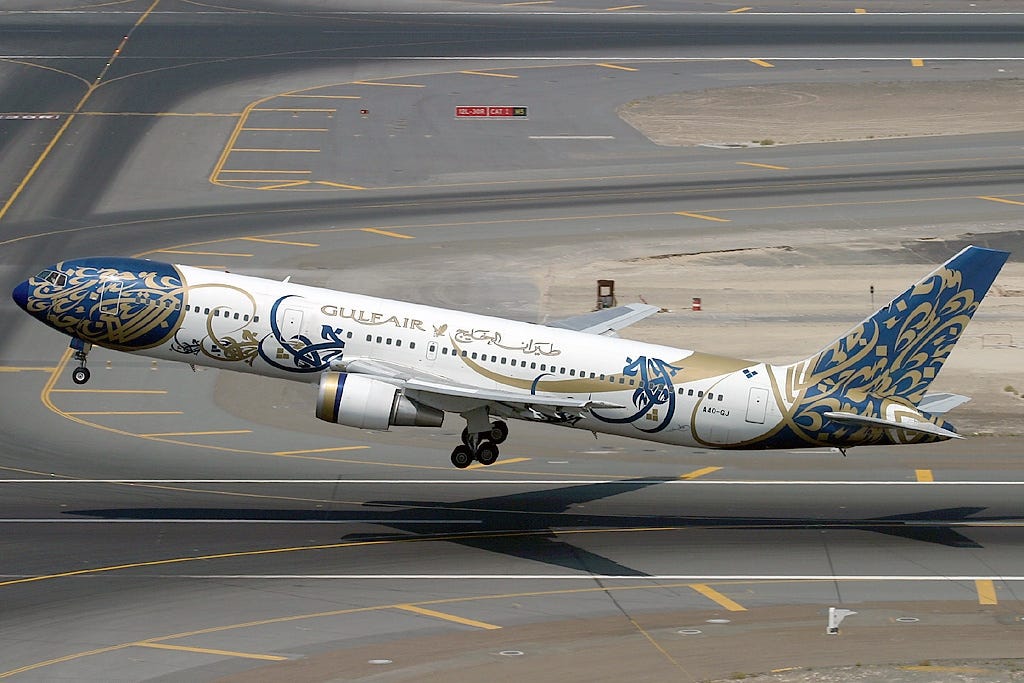
By the 2010s, Emirates, Etihad, and Qatar Airways remained the three giants vying for dominance over the skies of the Khaleej. With different backers and different strengths, their competition was fierce, and sometimes, financially irrational, with lavish orders of A380s, overcapacity on major routes, and eye-watering brand campaigns creating an arms race at 40,000 feet. But questions began to pile up: Was this sustainable? Were state subsidies masking commercial inefficiency? As geopolitics crept in, with blockades, shifts in oil prices, and rising climate targets, the old playbook started to look weak.
Then came the pandemic, grounding fleets, collapsing demand, and forcing a reset. Airlines slashed routes, restructured debt, and faced a new traveller mindset. Comfort now jostled with carbon conscience as sustainability shifted from merely a PR stunt to an existential imperative. It was clear that in this new era connectivity alone no longer wins the race, resilience, efficiency, and ecological responsibility do. This was the turbulence no pilot could outrun. But it’s also the moment when real innovation becomes necessary.
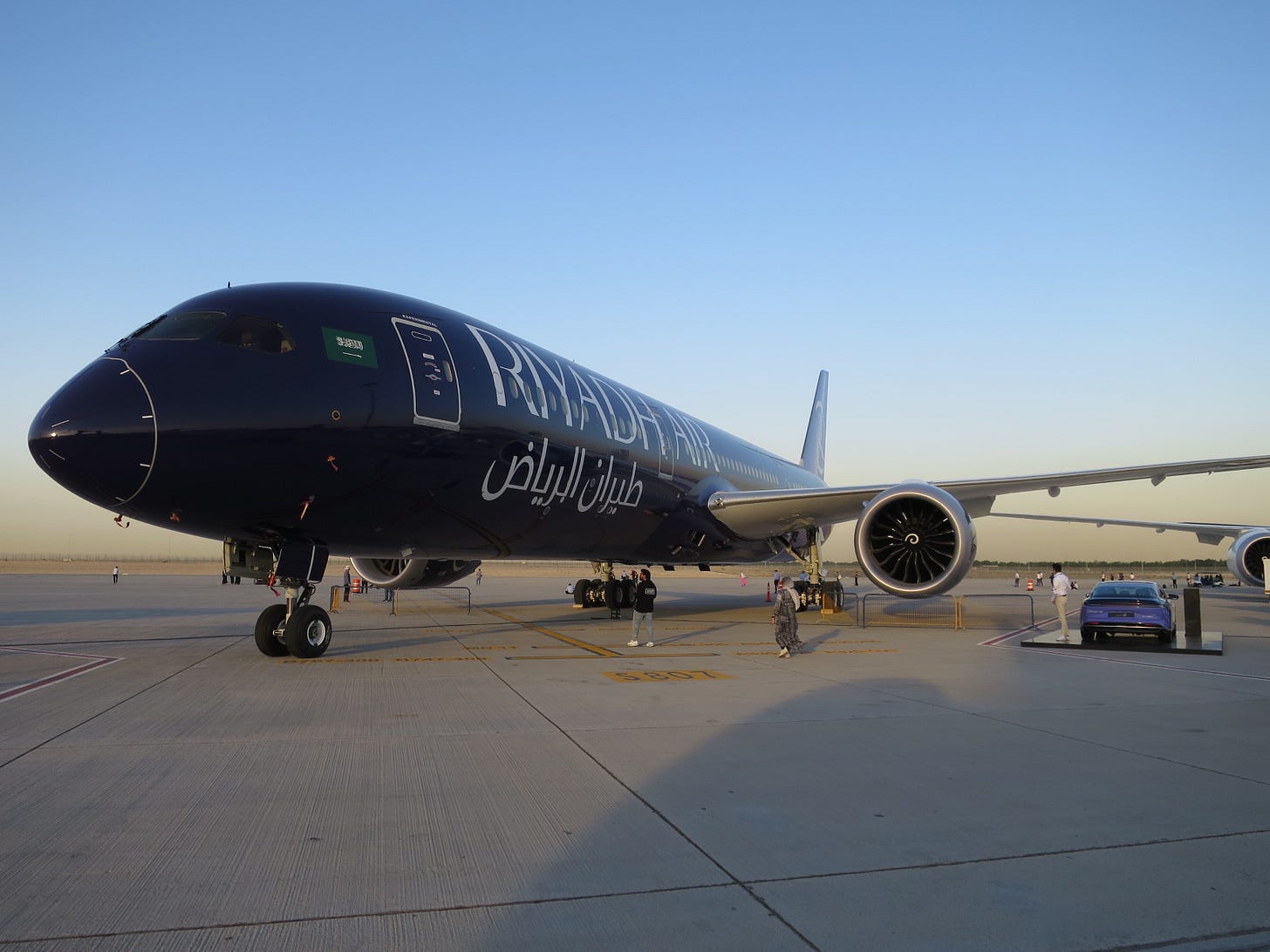
In 2023, Riyadh Air was announced as Saudi Arabia’s unapologetically ambitious leap into the premium aviation space. Backed by the kingdom’s generous sovereign wealth fund, Riyadh Air is more than just a new national airline, it’s a flying billboard for Vision 2030. But launching in an already saturated market with its three titans each with sprawling networks, deep pockets, and years of operational maturity, it raises the question of whether there room for another supercarrier? Riyadh Air enters the fray with no legacy baggage but sky-high expectations. Its mandate isn’t just to move passengers, it is to rebrand a nation and make Riyadh a global aviation hub to rival Dubai and Doha to support the Kingdom’s broader ambitions in tourism, trade, and soft power. But for all its ambition, Riyadh Air faces a brutal reality. Premium passengers tend to be loyal, fickle, and often price-sensitive, a point Qatar Airways (for whom Saudi premium customers are its biggest market) cheekily chided in its latest ad campaign targeting the fledging airline. With a youth-heavy population, a government unafraid of state-led ventures, and an airport overhaul underway, Riyadh Air is flying into tailwinds, provided it stays agile, avoids Etihad’s mistakes, and learns fast.
Conclusion: Future of Gulf Aviation
As the Gulf’s aviation story enters its next chapter, the path forward is both promising and precarious. The region has already transformed sand dunes into aerotropolises, and national carriers into global icons. But now, prestige must give way to purpose and the Gulf must lead not only in size, but in substance. Thus far, the Gulf has been a buyer’s market, with bulk orders from Boeing and Airbus, lavish cabin fittings, and leased fleets aplenty. But talk is growing of a new ambition: to build, not just buy.
Saudi Arabia and the UAE have both dipped their toes into aerospace manufacturing, from MRO (Maintenance, Repair & Overhaul) hubs to drone development. But true sovereign aviation capability demands a leap into domestic aircraft production, supply chain localization, and heavy R&D investments. Could we one day see a Gulf-made regional jet taxiing onto the runway? It’s not impossible, but it’ll take political will, skilled labour, and serious capital. Furthermore, environmental scrutiny is tightening like a noose and Gulf carriers must transition from being mere symbols of opulence to champions of sustainable aviation. This means SAFs (Sustainable Aviation Fuels), hydrogen experimentation, electric taxiing, and reevaluating the mega-hub model. Perhaps the next prestige move might be a net-zero fleet, and not just a fancier first-class suite.
The pandemic taught the world an uncomfortable lesson: scale without flexibility is fragility. Future airlines must be nimble, tech-savvy, and digitally native. The Gulf's aviation story began with vision, was fuelled by wealth, and matured through rivalry. But its future must be anchored in sustainability, sovereignty, and smart strategy. The challenge is to maintain world-class status not by racing to the bottom with subsidies and overcapacity, but by innovating, adapting, and setting new standards. To fly is no longer enough, the Gulf must learn to fly wisely.



